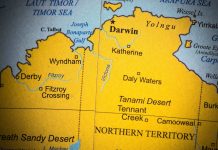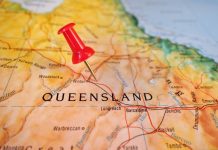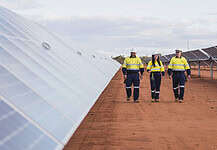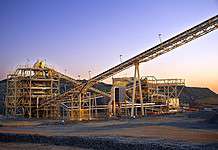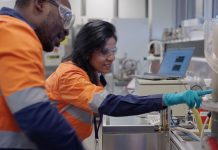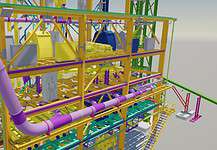Tomago Aluminium is one of Australasia’s largest aluminium smelters, contributing a total $1.5b to the nation’s economy and its local community every year.
Located in north-west Newcastle in the industrial suburb of Tomago, the smelter sits on 500ha surrounded by bush and has been an important feature of the Hunter region for over 35 years.
Tomago Aluminium is an independently-managed joint venture between Rio Tinto (51.55%), Gove Aluminium Finance Limited (36.05%) and Hydro Aluminium (12.40%).
The owners provide raw materials to Tomago Aluminium that are converted to aluminium at the Tomago plant, after which the product is supplied back to the owners, who take it to market.
A total of 90% of the product made at Tomago Aluminium is exported to the Asia-Pacific region.
Since 1983, Tomago Aluminium has operated 24 hours a day, with the smelter producing about 590,000tpa of aluminium, which makes up 25% of Australia’s primary aluminium.
It spends $900m on materials, supplies and labour annually in Australia and contributes about $500m to the Hunter region alone.
A spokesperson for Tomago Aluminium says the key fundamentals underpinning the plant’s success for almost four decades are the technology, people and work culture.
“The technology that produces aluminium is world class and has continued to grow and improve over the last 35 years, allowing us to maintain international competitiveness,” he said.
“The business is an employer of choice in the Hunter region, offering great stability and employment conditions for employees.
“Having well trained and motivated workers has been a major contributing factor to our success during that time.”
About Aluminium
Australia is the world’s leading producers of bauxite and alumina, accounting for about 20% of global alumina and 30% of global bauxite.
Aluminium is also Australia’s fifth largest export commodity.
An infinitely recyclable, lightweight and corrosion-free metal, it is used in a wide range of sectors and found in almost everything from jet engines to electric vehicles to mobile phones to homes to sporting equipment.
Bauxite, also known as aluminium ore and plentiful in the earth’s crust, is the basic raw material that is refined into alumina, which is then sent to smelters for processing into aluminium.
Raw Data
Alumina and bauxite are the two main raw materials in the aluminium making process.
Aluminium is obtained by the electrolysis of alumina, which extracts pure aluminium metal from alumina.
Bauxite, a clay-like soil, is mined in Queensland and the Northern Territory, from which alumina or aluminium oxide is extracted through the refining process.
A hot solution of caustic soda and lime further separates the alumina from the bauxite.
The alumina mixture is then heated and filtered, with the remaining alumina turned to a white powder.

The Tomago Technique
Aluminium production takes place in potlines. Tomago has three large pot lines with a total of 840 pots.
Three different raw materials are required in the aluminium-making process – alumina, electricity and carbon.
Alumina: alumina is transported by ship to the Port of Newcastle and taken to the Tomago smelter to be turned into aluminium metal.
Electricity: a substation onsite supplies electricity to the pots, which are connected electrically so a current flows through one pot onto the next.
Carbon: the electricity reacts with the anodes (a black carbon block that lines each pot) and causes the alumina to separate into aluminium and oxygen.
Using the tapping method, liquid aluminium is siphoned from the pots and carried to the casthouse in ladles, where impurities are removed and alloyed elements such as magnesium and silicon are added according to its final use.
Properties such as strength, corrosion resistance and surface quality are adjusted in this final stage of the process, after which liquid aluminium is cast into extrusion ingots, sheet ingots or foundry alloys.
Energy and Electricity
Aluminium smelting is an energy-intensive industry, with Tomago Aluminium demanding about 850MW on a constant basis.
The aluminium production chain relies on electricity to power the process 24 hours a day, 365 days a year.
Tomago Aluminium uses around 10% of the NSW power supply to produce 590,000t of aluminium per year.
Electricity consumption accounts for about 40% of an aluminium smelter’s costs.
“Tomago is a large consumer of electricity and its competitiveness long term requires affordable and stable baseload energy supply,” the company spokesperson said.
“Tomago is critical to the stability of the national electricity grid, with the Prime Minister recently visiting the site to recognise our contribution and commit to the support for the business for the longer term.”
Prime Minister Scott Morrison toured the Tomago Aluminium Smelter in September this year, after his National Energy Address outlining the Federal Government’s commitment to building a new Kurri Kurri gas plant if the private sector did not match “like-for-like” the current capacity of the Liddell power station prior to its closure in 2023.
Tomago Aluminium chief executive Matt Howell said the announcement was great news for the smelter and the manufacturing industry.
“This will ensure more than enough reliable supply and allows us to pursue the opportunity for a firmed renewable energy portfolio knowing that Liddell will no longer be available,” he said.
“This announcement reflects all the hard work we and others have been doing to get some balance into the energy debate.”
Tomago Aluminium also put 600MW of electricity back into the power grid in January this year, due to enormous pressure on NSW electricity supply caused by record summer temperatures, catastrophic bushfires and air-conditioning units running overtime.
The plant acted as a ‘virtual battery’, redirecting the load and stabilising the grid, after it was asked to help out by the Australian Energy Market Operator and AGL.
Emission Omission
Tomago Aluminium has emission levels among the lowest recorded by any aluminium smelter in the world.
The plant incorporates one of the world’s most advanced pollution-control and environmental protection systems.
Emissions created during the smelting process pass through ducting to treatment plants, known as dry scrubbers, where impurities are removed.
Among the emissions carried to the dry scrubbers are fluorides, which with other fumes and dust, form particles that are captured in large filter bags.
These particles are returned to the smelter as feed material. This process is more than 99% effective in removing fluoride from the gases collected.



